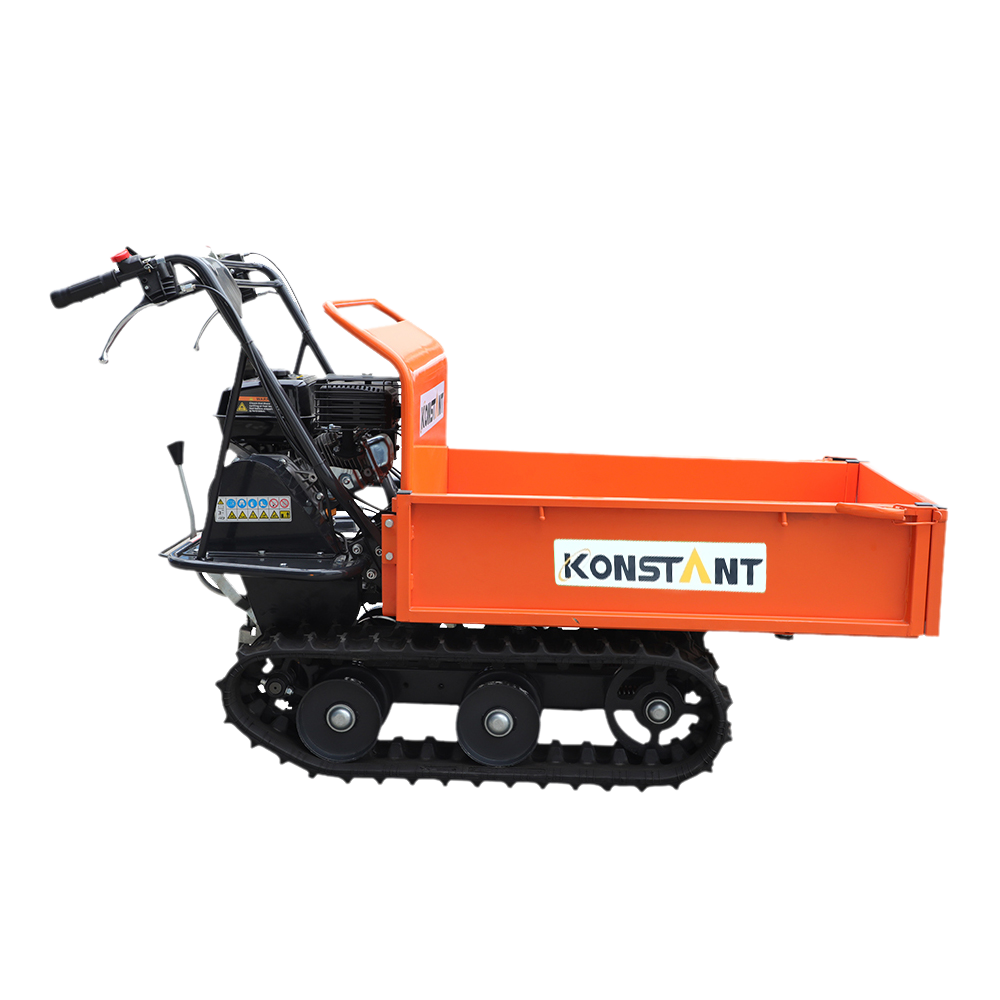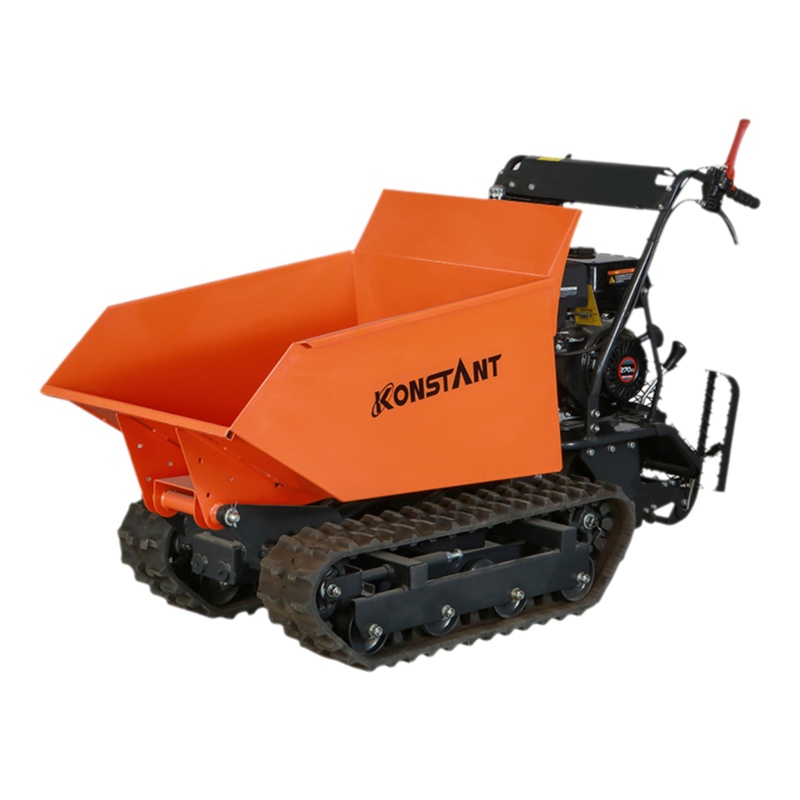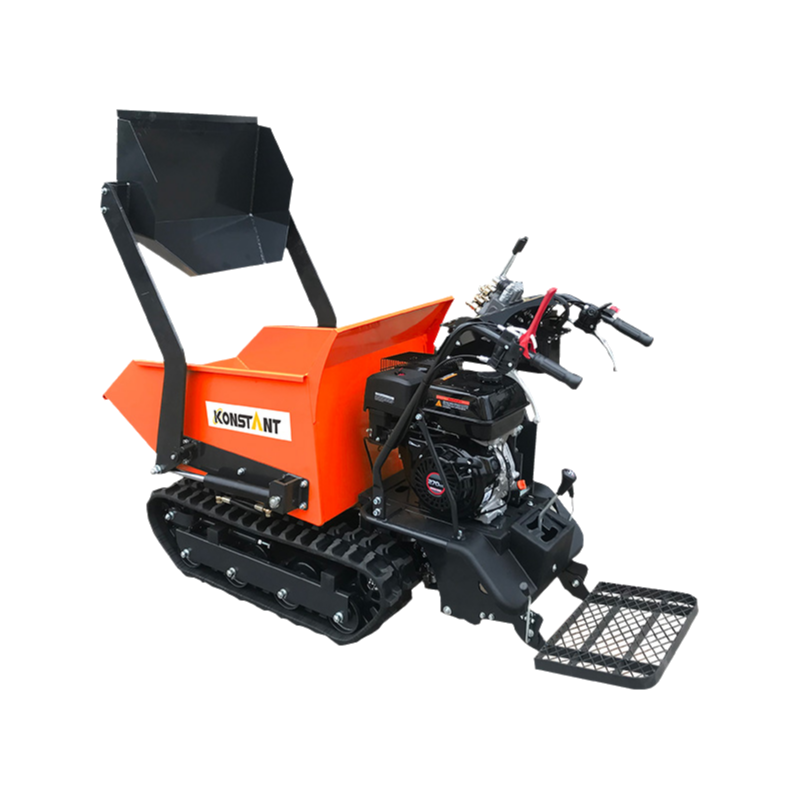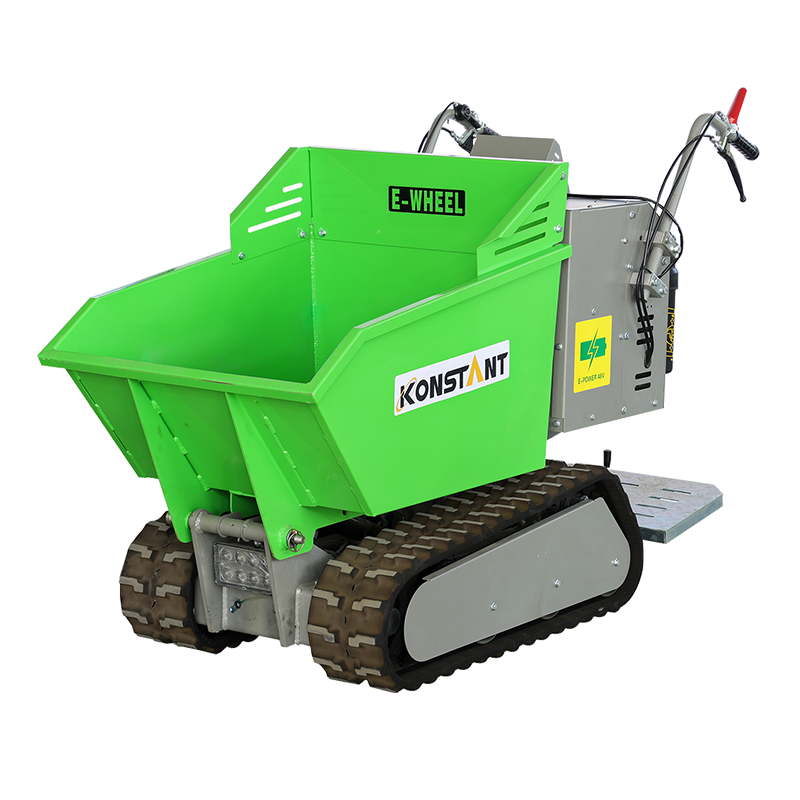Provide you with the latest enterprise and industry news
What Benefits Does a Garden Loader Bring to Modern Landscaping
Posted by Admin
What Is a Garden Loader and Why Does Your Landscape Need One
Modern landscaping is about efficiency, sustainability, and well-planned outdoor management. As gardens evolve from simple green spaces into structured and functional landscapes, new equipment has emerged to support this transition. Among these, the Garden Loader plays a practical role in keeping projects smooth and organized.
The Role of Compact Outdoor Equipment
A Garden Loader is a small, mobile machine designed to transport materials such as soil, gravel, mulch, or construction waste. Its purpose is to make manual garden work easier while reducing the physical effort required from workers or homeowners. By combining lifting, carrying, and loading in one tool, it streamlines tasks that once demanded multiple trips with wheelbarrows or buckets.
These machines often feature attachments that adjust to different needs. Whether moving planting soil, preparing ground levels, or cleaning pathways, this equipment can adapt to various tasks with minimal setup. The flexibility it offers has made it a valuable asset in both private and commercial landscapes.
Why Landscapers Choose Efficient Machinery
Landscaping involves repetitive movement of materials and constant reshaping of terrain. Doing all this by hand is time-consuming and physically demanding. Mechanical assistance allows teams to maintain productivity without sacrificing precision.
Saves time and energy by transporting materials quickly across large or uneven areas.
Improves workflow as multiple jobs can be completed using a single piece of equipment.
Promotes safety by reducing strain and heavy lifting.
Enhances accuracy when spreading or leveling soil and aggregates.
Such efficiency not only benefits professional landscapers but also helps homeowners maintain their outdoor spaces with less effort and greater control.
Matching the Equipment to the Task
Every garden or landscape is different. Choosing the right type of outdoor loader requires understanding the environment and materials involved.
| Task Type | Equipment Focus | Typical Application |
|---|---|---|
| Soil Transport | Lightweight mobility | Garden beds and planting zones |
| Ground Preparation | Smooth control | Leveling patios or paths |
| Waste Removal | Larger capacity | Post-construction cleanup |
| Plant Relocation | Gentle handling | Moving shrubs or potted plants |
The goal is to find a balance between functionality and maneuverability. Compact models suit smaller gardens, while larger projects benefit from stronger frames and broader load capacity.
Integrating Sustainability into Garden Work
Environmental awareness has become a guiding principle in landscaping. Many new machines are designed with cleaner energy sources, lower noise levels, and reduced emissions. This trend reflects the industry's commitment to responsible practices and long-term environmental care.
Energy-efficient outdoor machinery supports green goals by reducing fuel waste and improving operational quietness—important for residential areas or community gardens. It also helps preserve soil health by minimizing compaction, allowing better drainage and plant growth.
Practical Safety and Maintenance Habits
Safe operation is essential for both new and experienced users. Consistent inspection before each use—checking tires, fluid levels, and attachments—can prevent issues. Operators should always follow the manufacturer's guidance and keep the working area free from obstacles.
Regular cleaning after use avoids buildup of debris, which helps maintain performance. Scheduled maintenance ensures smooth operation and a longer service life for any piece of landscaping machinery.
The Broader Value of Modern Outdoor Equipment
A Garden Loader represents a thoughtful approach to outdoor work. It simplifies the physical side of landscaping, helps manage resources effectively, and supports sustainable gardening practices. Whether used in a private backyard or a commercial project, this machine contributes to organized, efficient, and environmentally mindful results.
Landscaping is no longer only about aesthetics—it is about balancing function, efficiency, and ecological responsibility. With proper planning and the right tools, every outdoor space can be managed with care, precision, and long-term vision.
Top Types of Garden Loaders for Residential and Commercial Landscaping
Following the introduction to garden equipment, understanding the variety of machines available is essential for choosing the right solution. Different models serve different needs, and selecting one that matches your landscaping projects can save time, reduce effort, and improve overall workflow.
Understanding the Range of Outdoor Loaders
Modern garden machines are designed to handle a range of materials, including soil, mulch, stones, and garden debris. Their compact design allows them to maneuver through narrow paths and confined areas, making them suitable for residential gardens as well as larger commercial projects. While all models share the general purpose of transporting and lifting materials, each type offers unique advantages depending on terrain, project size, and task complexity.
Common Categories of Garden Loaders
| Type | Strengths | Typical Uses |
|---|---|---|
| Wheel Loader | Smooth handling and easy mobility on flat surfaces | Transporting soil and mulch in residential gardens |
| Track Loader | Stable performance on soft or uneven ground | Large commercial sites or hilly landscapes |
| Mini Loader | Compact and easy to store | Small gardens, courtyards, and urban areas |
| Articulated Loader | Flexible steering for precise movements | Projects with narrow paths or obstacles |
| Electric or Battery-Powered Loader | Low noise, environmentally conscious operation | Eco-sensitive areas or residential zones |
Residential Applications
In smaller gardens or private yards, space is often limited, and careful handling is important. Compact models provide flexibility and maneuverability for moving soil, planting materials, or decorative stones. Electric or battery-operated machines are increasingly preferred due to their quiet operation and minimal emissions. These features make them suitable for projects where environmental concerns or neighborhood noise restrictions are relevant.
Commercial Applications
Commercial landscaping requires equipment capable of handling larger volumes and extended working hours. Track loaders or articulated versions are often chosen for their stability and ability to operate on uneven terrain. With optional attachments like forks or blades, a single machine can perform multiple functions, reducing the need for extra tools or labor. This versatility is particularly useful for businesses managing multiple properties or complex landscape designs.
Choosing the Right Machine for Your Needs
Selecting the proper model depends on several factors:
- Project Size – Larger properties benefit from higher-capacity machines, while smaller sites may only need compact loaders.
- Terrain – Wheeled units work on flat surfaces, whereas tracked versions handle softer or sloped ground.
- Material Type – Different machines manage soil, stones, or mulch with varying efficiency.
- Frequency of Use – Daily commercial use requires durable equipment and easily maintainable components.
- Attachments – Consider optional tools to expand functionality, such as buckets, forks, or rakes.
- Matching the right type of equipment to the task ensures efficiency, safety, and consistent project results.
Trends in Landscaping Machinery
Technology is increasingly shaping the development of garden machines. Energy-efficient engines, electric drives, and smart control systems improve usability and reduce environmental impact. Compact designs now allow operators to work in tighter spaces without sacrificing performance.
These improvements not only contribute to productivity but also align with sustainable landscaping practices. Reduced emissions, minimized soil compaction, and energy-conscious operation support eco-friendly management of outdoor areas.
Choosing the right type of garden equipment can transform both residential and commercial landscaping. Whether you are managing a small backyard or coordinating a larger project, understanding the different machine categories helps ensure that tasks are completed efficiently, safely, and responsibly.
By selecting a model suited to terrain, materials, and workload, users can optimize workflow, minimize effort, and maintain a cleaner, more organized work environment. Modern garden machines are not just tools—they are key partners in achieving functional and sustainable outdoor spaces.
Garden Loader vs Traditional Tools: Efficiency, Cost and Labor Savings
Landscaping and garden maintenance involve repeated handling of soil, plants, mulch, and other materials. Traditionally, these tasks relied heavily on hand tools such as shovels, wheelbarrows, and rakes. While manual methods can still be effective, modern equipment offers opportunities to improve efficiency, reduce physical strain, and optimize costs. Among these, the Garden Loader has become a valuable alternative.
Comparing Efficiency
Traditional tools require repeated trips, lifting, and carrying to move materials across a site. This process can be time-consuming and physically demanding, particularly on larger properties or commercial projects.
By contrast, a small mechanized machine can transport heavier loads in fewer passes. Its ability to scoop, lift, and move materials reduces the number of steps needed to complete each task. As a result, workflow becomes smoother, and workers can allocate time to other essential landscaping activities.
| Task | Traditional Tools | Mechanized Loader |
|---|---|---|
| Moving soil | Several trips, manual lifting | Single trip, higher volume handled |
| Distributing mulch | Requires careful spreading by hand | Quick distribution with consistent coverage |
| Clearing debris | Time-intensive cleanup | Efficient collection and transport |
| Plant relocation | Manual effort, risk of damage | Controlled lifting and placement |
Cost Considerations
At glance, traditional tools have low upfront costs. However, when factoring in labor hours, project duration, and potential strain on workers, overall efficiency may be lower.
Mechanized machines involve an investment in equipment and maintenance, but they can reduce labor needs over time. Fewer workers are required for repetitive tasks, and projects can be completed more quickly, often resulting in lower total expenses for long-term or large-scale landscaping work.
Labor Savings
One of the immediate benefits of mechanized assistance is reduced physical strain. Repetitive lifting, bending, and carrying with hand tools increases fatigue and can minor injuries or slower work pace. A compact loader handles these tasks safely, allowing workers to focus on precision and detail rather than heavy lifting.
In commercial landscaping, consistent performance across multiple projects improves productivity and reduces reliance on temporary or seasonal labor. Even in residential projects, a single operator can accomplish tasks that previously required two or more people.
Choosing Between Methods
Deciding whether to use traditional tools, mechanized equipment, or a combination of both depends on several factors:
Project Size – Smaller gardens may only need hand tools, while larger properties benefit from machine support.
Material Volume – High-volume tasks are easier and faster with a loader.
Terrain – Manual methods can handle delicate areas, whereas machinery excels on open or uneven ground.
Budget and Frequency – Regular landscaping tasks may justify the investment in equipment, while occasional work may not.
A flexible approach often works best. Some operations combine manual tools for detail work with mechanical assistance for heavier or repetitive tasks.
Environmental and Practical Benefits
Modern machines are increasingly designed with eco-conscious practices in mind. Electric and low-emission models reduce noise and fuel use, making them suitable for residential areas or sites with strict environmental regulations. By reducing unnecessary trips and minimizing soil compaction, they support healthier landscapes and more sustainable project outcomes.
Additionally, efficient material handling prevents waste and ensures resources are used effectively. By saving both time and effort, these machines contribute to smoother project management and more organized work sites.
While traditional tools have been the foundation of garden work for generations, the integration of compact mechanized machines brings measurable improvements in efficiency, labor savings, and project management.
Using a Garden Loader for repetitive or heavy tasks allows workers to operate safely, reduces overall project time, and can optimize costs over time. Whether in residential gardens or commercial landscaping projects, balancing manual methods with mechanical assistance creates a more productive, organized, and sustainable workflow.
How to Choose the Right Garden Loader for Your Project
Selecting the appropriate equipment for landscaping or garden work is an important decision that affects efficiency, safety, and long-term results. Among the various tools available, a Garden Loader offers versatility and convenience, but choosing the right type requires careful consideration of your project needs.
Assessing Your Project Requirements
Evaluating the size and scope of the task. Consider factors such as:
- Area and Terrain – Large properties or uneven ground may require machines with higher stability or traction. Small gardens may be better suited for compact models.
- Material Types – The weight and volume of soil, stones, mulch, or plants influence the machine's capacity and attachment options.
- Frequency of Use – Regular tasks benefit from durable equipment, while occasional work may not require larger investment.
By understanding these aspects, you can match the machine's capabilities to the demands of your project.
Comparing Available Options
Garden loaders come in a variety of designs, each with strengths for specific applications.
| Type | Key Advantage | Recommended Use |
|---|---|---|
| Wheel Loader | Smooth mobility on flat surfaces | Residential gardens, pathways |
| Track Loader | Enhanced traction on soft or uneven ground | Commercial sites, hilly terrain |
| Mini Loader | Compact size for tight spaces | Courtyards, small urban landscapes |
| Articulated Loader | Flexible steering for precise operation | Projects with obstacles or narrow paths |
| Electric Loader | Low noise and emissions | Eco-sensitive areas, indoor or residential use |
Evaluating the balance between size, maneuverability, and capacity helps determine which option fits your project requirements.
Understanding Attachments and Accessories
Attachments significantly expand the functionality of a loader. Common options include:
- Buckets for soil and gravel
- Forks for moving plants or landscaping materials
- Rakes or blades for leveling ground
- Augers for hole digging or planting
Selecting the right attachments allows one machine to perform multiple tasks efficiently, reducing the need for additional equipment.
Safety and Practical Considerations
While machinery improves efficiency, safety is paramount. Keep in mind the following practices:
- Inspect the machine before use, including tires, fluids, and attachment integrity
- Operate at controlled speeds, especially in tight spaces
- Maintain clear pathways and avoid obstacles
- Ensure operators are trained and wear protective gear as needed
- Schedule regular maintenance to prolong machine life and prevent unexpected downtime
Safe operation not only protects personnel but also ensures consistent performance across projects.
Budgeting and Long-Term Value
Cost is another factor when choosing equipment. Smaller machines often have lower upfront expenses, but may require more labor for larger projects. Larger or more versatile models involve greater initial investment, yet can save time and reduce worker fatigue over extended periods.
Consider overall value by balancing:
- Initial purchase price
- Expected labor savings
- Maintenance and operational costs
- Adaptability to multiple tasks
This approach ensures that your investment aligns with the project scale and long-term landscaping goals.
Environmental and Efficiency Benefits
Modern loaders are increasingly designed with sustainability in mind. Electric or energy-efficient models minimize fuel consumption and noise, while reducing emissions in sensitive areas. By optimizing material handling and decreasing repetitive manual effort, these machines contribute to greener landscaping practices.
Choosing the right Garden Loader requires careful evaluation of project size, terrain, material handling needs, and operational goals. By considering machine type, attachments, safety, and long-term value, you can select equipment that supports efficient, organized, and environmentally conscious landscaping.
With the proper choice, a loader not only simplifies physical tasks but also enhances project planning and execution, making outdoor work more manageable and productive.

 English
English русский
русский Français
Français Español
Español Deutsch
Deutsch















